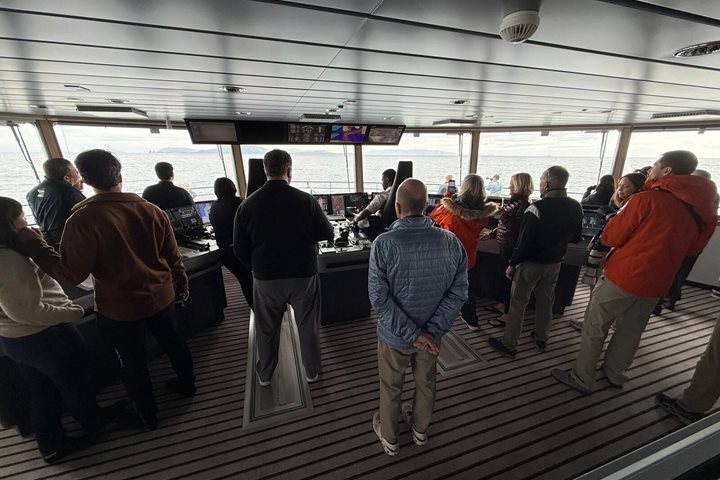Back and forth we roll, to and fro, over (but certainly not under) the waves we go. Crossing the Drake Passage, now officially recognized as a body of water, is a mariner milestone that is never the same journey twice. Over 200 nautical miles of open ocean are at the mercy of the truly unbridled weather of the Southern Ocean. No mountain ranges stop or slow the winds that travel around the White Continent. Storms build and whip up an impressive sea state that tops out the scale used to measure such things. Winds simply continue in a clockwise rotation as they see fit. There are lulls between these systems, and with the right ship and team, a very pleasant crossing can be had.
2/28/2025
Read
National Geographic Resolution
Northbound Drake Passage, Cape Horn, and the Beagle Channel
This morning, we had a later start than usual after a late night enjoying the crew show. Our galley team gifted us with a fulfilling brunch. We then had a brilliant forum about climate change with the participation of our panel of experts onboard. Afterward, our expedition leader called us to the bow to see Cape Horn, which was only a few miles ahead. The good weather allowed us to have a smooth and fast crossing, allowing extra time to swing by Cape Horn, the most southern tip of the Americas. Over the PA system, Steven provided a very interesting description of the historical importance of this area, then Pablo read a beautiful poem, a memorial to the seaman lost at sea. We could see the monument in the distance, two metal sheets that depict an albatross in flight. During the afternoon, we enjoyed Madalena’s presentation about Women in Antarctica. This was an incredible voyage through the struggles and delays of allowing women to participate in science and logistics in Antarctica. We entered the Beagle Channel around 17:00 and we encountered black-browed albatrosses, cormorants, dolphins, and whales. On our final approach to the beautiful city of Ushuaia, we passed by Les Eclaireurs Lighthouse and some of the seals that live in the Bridges Islands Archipelago.







